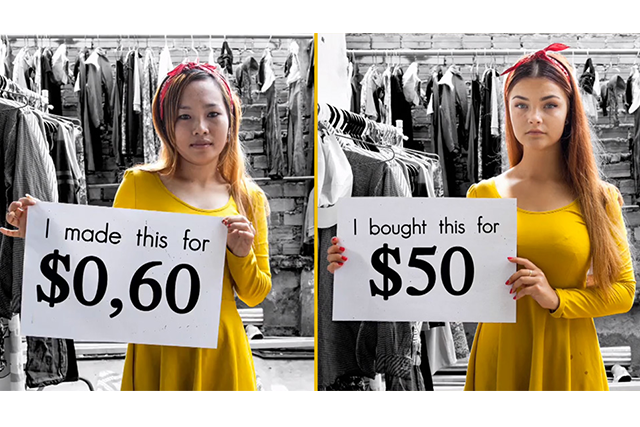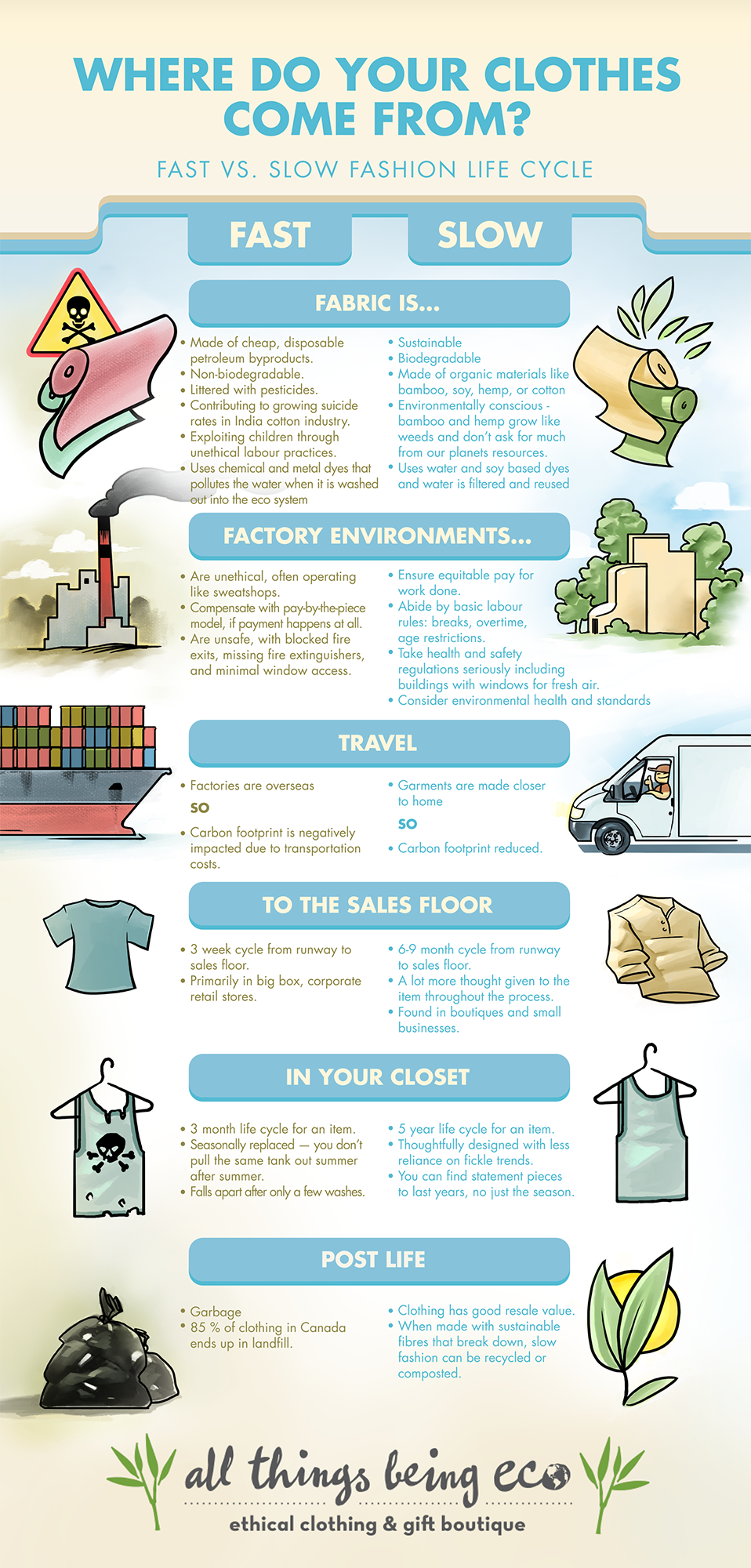
We remember concern over unethical manufacturing processes for big corporate brands like Nike and Gap. Reports poured in during the 90’s of sweatshop manufacturing and the state of working environments for employees in other countries.
Now, it’s 20 years later and we’re hearing about it again, only it has a new name: Fast Fashion.
- Fast fashion is low quality. It is the overwhelming trend of consumers buying clothes at low prices, only to have those clothes fall apart after a few washes.
- Fast fashion is high volume. It’s the push to have a trend off the catwalk and in stores in as little as 3 weeks — a process that used to take 6 to 9 months.
- Fast fashion is labour exploitation. It perpetuates low wages and unsafe work environments in poorer countries, so t-shirts can cost $6.
Fast Fashion Affects Economies On A Global Level
The outsourcing of the apparel industry overseas forced many manufacturing companies in Canada and the rest of North America to shut down, some of which had been open for over a century. This results in a loss of jobs and an increase to the environmental cost of global transport.
By moving production to countries with fewer labour standards including low minimum wage, clothing can be made and sold with lower price tags.
Large corporations expect massive orders to be filled on tight deadlines, and will sell their purchase orders to the factory that promises the quickest turnaround. That factory can then, without the corporation’s knowledge, subcontract the order to another factory. And down the rabbit hole we go.
It’s a cycle so damaging that news vlogger John Oliver dedicated a 20 minute segment to it.
Things are shifting. Consumers are starting to vote with their wallets, small manufacturers are starting to approach the apparel industry differently, and boutique shops dedicated to selling these items are popping up in more cities and towns.
Our Top 3 Reasons To Avoid Fast Fashion
As with everything that comes into the store, we’ve done our research on the clothing we carry. This is because we have concerns about what contributing to fast fashion means for our economy and the environment. There are a lot of concerns to choose from but these are our top three reasons to avoid fast fashion.
- Unethical practices for manufacturing.
- We consider this when bringing in apparel for the store. How was the garment made, in what factory, in what location?
- We try to choose Canadian made items first.
- Beyond that, how are the workers who made the garment being treated in the workplace? Are they being compensated and treated fairly?
- Made with fabric that is harmful to the environment.
- When it comes to using fabrics that are cheaper to produce, manufacturers are turning to unnatural products.
- Polyester, despite being plentiful in most fast fashion apparel, is an oil product.
- Cotton is thirsty — it demands six times more water than lettuce. And considering it makes its way into 40 percent of clothing, that’s a lot of water.
- Cotton crops require more pesticides and herbicides than any other crop grown.
- Fabrics are dyed with chemical & metal dyes that wash out into the eco-system and pollute the water.
- Ends up in the trash less than a year later.
- This contributes to an environmental concern — fast fashion is built to fall apart, creating more and more textiles in the landfill.
- 85 % of our collective clothing in Canada ends up in the landfill. Even textile recycling plants are contributing to this because of the poor quality of fabric when it gets to them.
Challenging Cheapness With Quality
The good news is you can challenge the fast fashion market by making different choices with your wallet. Here are some things we do, and you can too.
- Made in Canada.
- We source clothing made here when possible.
- Made organic.
- Clothing made of organic fabric last longer, the quality is better, and you’ll only pay for the item once.
- Look for Fairtrade.
- If it’s made overseas, this ensures it was made in an ethical environment, without child labour.
- Thrift.
- Look for second-hand, recycled or upcycled clothing that prevents more textiles from ending up in the landfill.
- Zero-waste manufacturers.
- These are companies dedicated to designing patterns that leave no fabric waste. We like Skunk Funk.
A note about zero waste:
It’s anything but a new concept. During war time when everything was rationed, clothing makers were forced to be creative and reduce their waste. Hemlines went up because of fabric rationing.
Then, after the 2nd world war North American economies were booming and there was less concern about waste. People didn’t have to think about it, so it fell out of favour. The boom equaled excessive waste.
Now here we are, concerned once again about waste. Not because there’s less to go around, but because there’s too much.


